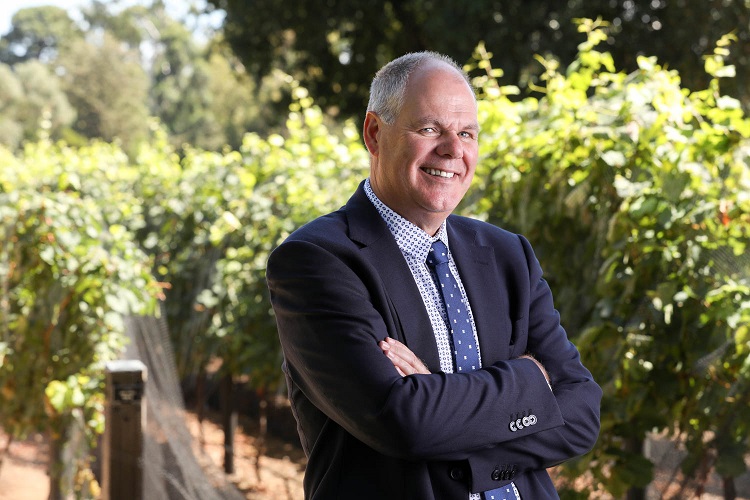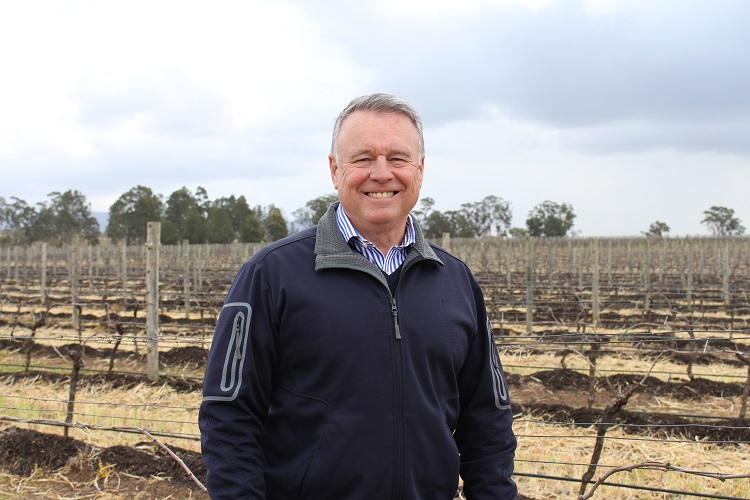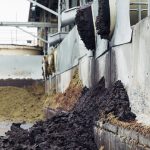The Australian wine industry has benefitted greatly from research and development under a co-investment model whereby the dollars collected from grapegrowers and winemakers through levies and user-pays charges are matched by the Australian Government.
In 2011, a Productivity Commission Inquiry into Rural Research and Development Corporations recommended changes to Rural R&D funding. However, the then Labor Government did not accept all the report’s recommendations. However, the wine industry understands that a newly-elected Labor Government would revisit all the report’s recommendations. With a federal election poised for May 2019, we invited the Shadow Minister for Agriculture, Fisheries and Forestry and Rural and Regional Australia, Joel Fitzgibbon, to explain to Grapegrower & Winemaker readers where the Labor Party currently stands with respect to rural R&D funding. We then invited Australian Grape & Wine chief executive Tony Battaglene to respond.
Joel Fitzgibbon, Shadow Minister for Agriculture, Fisheries and Forestry and Rural and Regional Australia
The National Farmers Federation boasts an aspiration to grow Australia’s $60 billion agriculture sector to a $100 billion industry by 2030. It’s an ambition worthy of support and I want our winemakers and grapegrowers to play a big part.
But the reality is that $100 billion would be a “business as usual” result. As a share of the economy, it would leave agriculture approximately where it is today. We can do better and the wine and grape sectors can do better.
But we won’t do better until we develop an urgency to do so. The first step is to stop believing our own bravado (I could have used a different word) and face the reality that productivity remains flat, international competition is growing, we are losing global market share and our climate is working against us.
With the right scientific approach we can mitigate and adapt in the face of a changing climate. We can counter growing competition by becoming more cost competitive. And we can lift productivity through automation and plant breeding technologies. But the key to achieving all of these things is research and innovation. This is why agriculture research should be amongst our highest policy priorities. It’s also the door to the strongest of biosecurity systems.
Research in the agriculture sector is shared by a range of entities: state governments; universities; the CSIRO; and Cooperative Research Centres. But the bulk of Commonwealth and industry investment is done through 15 Research and Development Corporations (RDCs). Some are statutory bodies, other have evolved into industry-owned companies.
Few Australians will know about our RDCs, in part because many have removed ‘research’ from their branding. Dairy Australia, Meat & Livestock Australia, and AgriFutures are all RDCs. So, too, are the Grains RDC and the Fisheries RDC.
Between them the RDCs receive around $400 million in taxpayers’ money each year. This investment matches money the RDCs receive from their levy paying farmers, foresters, fishers. Most people will be surprised to learn the RDCs do not do research. Rather, their boards and CEOs set research priorities and contract out the work to other entities. The overheads and transaction costs associated with this process are significant.
The architecture has served both the agriculture sector and the Government well for almost 30 years. It was the initiative of a Labor Government and we are proud of it. But it is now tired and in need of renewal. Our RDCs have grown bloated with non-research activities. They suffer ‘silo syndrome’: too little crosssectoral research takes place. Too often they act more like industry leadership groups than research organisations. They tend to invest only to the level where the Government’s matching funds dry up. Their work in marketing is important but too often can be a distraction from the main game. Measuring their performance is a difficult task for even the most learned and time endowed.
Back in 2010 the former Labor Government came to the view it was time to re-visit the model. The Productivity Commission (PC) was tasked with a review. It made significant recommendations about both the funding and operational models. Sadly, the 2013 election intervened before Government could respond. The report has been gathering dust ever since. It’s time to dust if off and update the PC’s good work.
Research dollars are scarce and we need to ensure every cent invested is a cent well spent. A Shorten Labor Government will build on the foundations laid by the Hawke Government by ensuring we have the best agricultural research system in the world and one that ensures we meet our aspirations.
Tony Battaglene, chief executive, Australian Grape & Wine Incorporated

We are delighted that the Shadow Minister for Agriculture, the Hon Joel Fitzgibbon MP, has nailed his colours to the mast in support of R&D for Agriculture. Joel Fitzgibbon is, of course, keenly aware of the importance of the grape and wine sector and has been a true advocate for his constituents in the Hunter and more broadly for many years.
Innovation is a critical component underpinning Australia’s agricultural sector by improving the productivity, quality and sustainability of agricultural products. The Australian grape and wine industry has grown and prospered through innovation and strong leadership. Industry has used two processes to drive this innovation – through the provision of new knowledge from research; and through industry led and directed activity. Innovation is driven by the companies that make up the Australian wine industry, either individually or collaboratively, and uses information from a wide variety of sources, such as in-house research and technical activity, publicly-funded research, extension and education, suppliers to the industry, private companies and consulting organisations, CSIRO, universities and the Australian Wine Research Institute.
Efficiency in the funding and provision of research is essential to ensure that scarce funding is not competed away in the scramble for research dollars. The RDC model is unique to Australia and a major plank in our future
proofing strategy to ensure sustained success for the sector. The matching of government and industry contributions up to a maximum of 0.5% Gross Value of Production is critical to ensuring the success of the grape and wine sector. This commitment to Rural Research and Development Corporations recognises the significant market failure typical in rural industries. We continue to support investment in R&D through an industry levy matched by the Federal Government, with a cap on matching contributions for all statutory levies at 0.5%, managed on behalf of industry by Wine Australia.
The Productivity Commission Review had many good ideas, and we look forward to working with Joel Fitzgibbon, if he becomes the Minister following the election, to determine which elements of the recommendations are still fit-forpurpose and what we need to do to the system to ensure enduring profitability of the grapegrowing and winemaking sector. Australia must invest in improved technology to ensure we can compete in terms of production efficiency and innovation with our global competitors.
This article was originally published in the April issue of the Australian & New Zealand Grapegrower & Winemaker magazine, to subscribe click here.





















